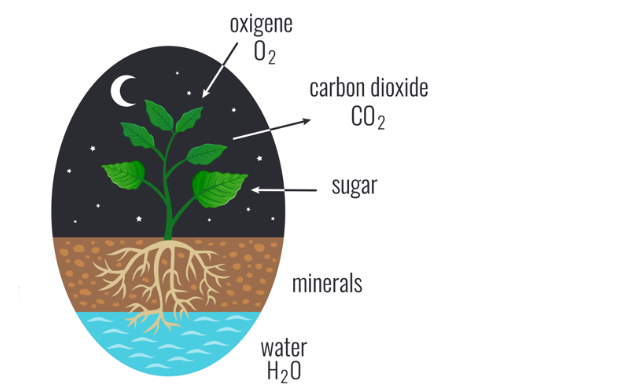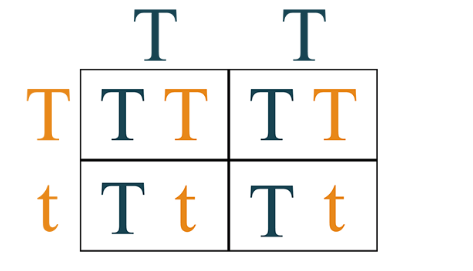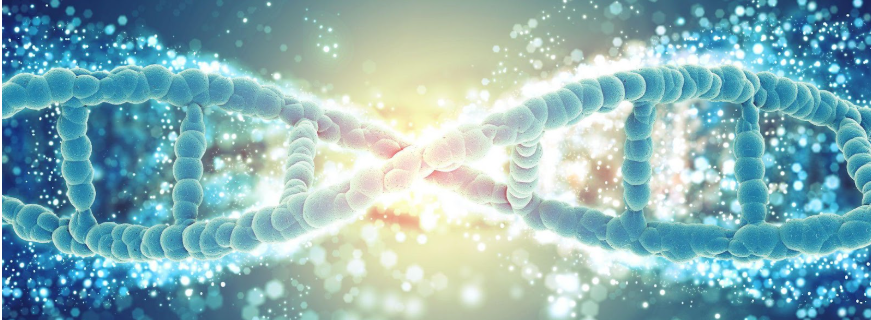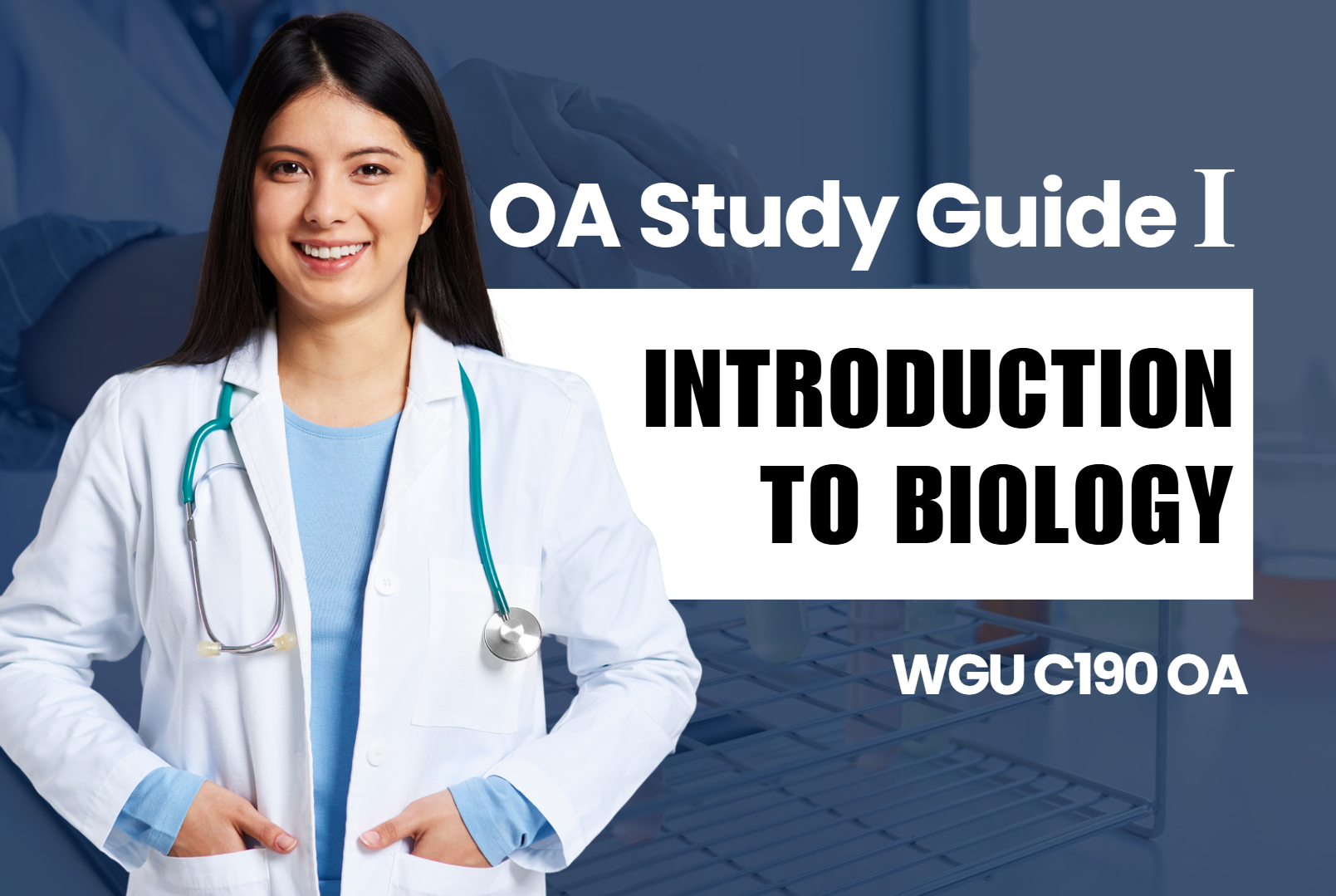WGU C190 OA Study Guide I - 2025 | Unlocking the Secrets of Life: Genes, Traits, and the Magic of Punnett Squares📖
Ever wondered why you ended up with your dad’s curly hair but your sibling got mom’s straight locks? Or why some people can roll their tongues while others can’t? It’s not magic—it’s genetics! Whether we realize it or not, our genes dictate everything from our eye color to whether we like the taste of cilantro (seriously, it’s genetic!).
This article explores two fundamental biological processes and a key concept in genetics that are essential for understanding life functions and inheritance:
- Photosynthesis and Cellular Respiration: These two processes are vital for energy transfer in living organisms. Photosynthesis allows plants to convert sunlight into chemical energy, while cellular respiration enables cells to break down food and release usable energy in the form of ATP.
- Genes and Punnett Square: Genes carry the instructions for inherited traits, and their combinations determine characteristics in offspring. The Punnett square is a useful tool in genetics that helps predict the probability of different traits appearing in future generations.
The father of genetics Gregor Mendel established genetic inheritance comprehension by conducting his well-known pea plant experiments. Due to his discoveries, it is now possible for us to determine the likelihood of traits being transmitted to future generations. This article presents a detailed exploration of genetic material alongside Punnett square analysis and inheritance trait patterns. Students preparing for WGU C190 OA exams while those interested in life discoveries will find an educational genetic exploration that awaits them. Let’s get started.
How to Use This Guide for the WGU C190 OA Exam?📖
The C190 Introduction to Biology OA exam at WGU evaluates your understanding of biological processes, cellular functions, and the fundamental principles of biology. This guide simplifies the key concepts of photosynthesis and cellular respiration and genes and Punnett square to help you grasp the topics tested in the exam.
We also provide exam-style questions and practical applications to ensure you’re fully prepared for the questions on the WGU C190 OA exam.

Photosynthesis and Cellular Respiration: The Power Duo of Life For C190 OA 📝
Imagine if your phone could charge itself just by sitting in the sun. That’s pretty much what plants do! These organisms use sunlight to create energy using the process of photosynthesis. The process creates glucose as stored energy that supports their biological growth. The process of photosynthesis enables human beings to survive through oxygen while serving animals as a source of food.
Cellular respiration runs as a dual biological process within plant and animal body systems. The biochemical process of decomposition of glucose produces cellular energy in the form of ATP which functions as cellular currency. The absence of cellular respiration makes it impossible for cells to perform vital processes including growth and repair together with movement functions. Photosynthesis obtains energy through its process while cellular respiration distributes this energy creating a persistent cycle that enables Earth’s survival.
We will explain the complete method for understanding how these processes function together to support life through simple steps.
Photosynthesis: Turning Light into Life

Phototrophic organisms among plants and algae together with specific bacteria types transform solar energy into chemical energy for storage. These organisms serve as natural power cells. Similar to power generation through solar panels sunlight enables phototrophs to create a usable energy form that powers their cellular processes.
The Photosynthesis Formula
At its core, photosynthesis is a simple equation:
Carbon dioxide + Water + Sunlight → Glucose + Oxygen
Or in chemical terms:
6CO₂ + 6H₂O + Light → C₆H₁₂O₆ + 6O₂
This reaction takes place in the chloroplasts, the special energy factories inside plant cells. Let’s explore how this happens in two major stages.
Stage 1: The Light-Dependent Reactions (The Power-Up Phase)
Location: Thylakoid membranes of the chloroplasts
Goal: Capture sunlight and convert it into usable energy (ATP and NADPH)
- The light energy from the sun stimulates chlorophyll pigments in leaves to activate electrons in a manner similar to popcorn under microwave heat.
- Water molecules (H₂O) break down through a process that produces separation of hydrogen ions (H⁺) and oxygen (O₂). Plants release oxygen into the air as a result of their process.
- Light energy gets transferred through chloroplast machinery to create both ATP and NADPH molecules for storing that energy.
Key Products: ATP, NADPH, and Oxygen
Stage 2: The Calvin Cycle (The Sugar Factory)
Location: The Stroma (the fluid-filled space in the chloroplast)
Goal: Use ATP and NADPH to turn carbon dioxide (CO₂) into glucose (C₆H₁₂O₆), which stores energy for later use.
- Leaves contain stomata which provide the pathway for carbon dioxide molecules to pass inside.
- ATP and NADPH initiate a process through which carbon dioxide molecules are turned into new glucose structures.
- Plants (together with their animal consumers) use glucose as stored energy to power themselves.
Key Product: Glucose
Photosynthesis doesn’t just provide food for plants—it provides energy for the entire food chain and the oxygen we breathe!
Cellular Respiration: Unlocking Energy from Food

After glucose production by plants, the next step takes place. The stored energy needs to be released through cellular respiration by both plants and animals. The entire body performs this process to convert glucose molecules into more accessible energy through the production of ATP (adenosine triphosphate). The energy supply is crucial for many cellular mechanisms like muscle movements alongside nerve functions together with temperature regulation. The efficient operation of cellular functions depends on ATP so cellular respiration functions as the essential life-sustaining process.
The Cellular Respiration Formula
Glucose + Oxygen → Carbon dioxide + Water + ATP
Or in chemical terms:
C₆H₁₂O₆ + 6O₂ → 6CO₂ + 6H₂O + Energy (ATP)
Cellular respiration happens in three major steps:
Step 1: Glycolysis (Breaking the Sugar)
Location: Cytoplasm of the cell
- Glucose (a six-carbon sugar) is split into two molecules of pyruvate (a three-carbon compound).
- This step produces 2 ATP (not much, but it’s a start!).
Key Products: Pyruvate and 2 ATP
Step 2: The Citric Acid Cycle (Krebs Cycle)
Location: Mitochondria (the powerhouse of the cell)
- Pyruvate is converted into acetyl-CoA, which enters the Krebs cycle.
- Carbon dioxide is released as a waste product.
- More ATP, along with energy carriers NADH and FADH₂, is produced to power the next stage.
Key Products: CO₂, ATP, NADH, and FADH₂
Step 3: The Electron Transport Chain (ATP Bonanza!)
Location: Inner membrane of the mitochondria
- NADH and FADH₂ transfer high-energy electrons through a series of proteins.
- Oxygen (the final electron acceptor) helps form water.
- This step produces a whopping 36-38 ATP molecules, making it the most energy-efficient part of cellular respiration.
Key Products: ATP and H₂O
How Photosynthesis and Cellular Respiration Work Together
Photosynthesis and cellular respiration are like two sides of the same coin. They complement each other:
- Photosynthesis stores energy in glucose, while cellular respiration releases it.
- Several organisms use oxygen which forms during photosynthesis as one of their chemical respiration requirements.
- Photochemical processes need carbon dioxide molecules which are made during cellular respiration.
Life sustains itself on Earth because this elegant cycle allows sunlight to pass through plants and into animals until its return to atmospheric elements.
Importance For C190 OA
Having plants serves a purpose because they create your food supply while supplying the oxygen that sustains your life. Our breathing releases the carbon dioxide molecules that plants use to produce their food supply. It’s a perfect give-and-take system. Any time you inhale deeply you should remember to express gratitude towards photosynthesis!
Understanding these processes is key to mastering biology, and if you’re preparing for WGU C190 OA questions, make sure you grasp how energy moves through living organisms. Now, go impress someone with your knowledge of nature’s energy cycle!
Genes and Punnett Squares: The Blueprint of Life For C190 OA 📝
The combination of eye color from your mother and hair characteristics from your father remains one of life’s mysterious phenomena. The functioning mechanism that defines your attributes rests within your genes. Research scientists use Punnett squares to forecast how genes are inherited according to specific patterns. This part will introduce genetic science through a step-by-step explanation of Punnett squares for trait inheritance analysis.
What Are Genes?

Genes serve as life’s essential particles that contain trait-specific directions for every living being’s characteristics. DNA (deoxyribonucleic acid) functions as the main component of genes because it contains genetic instructions needed for plant growth development and operation. A gene contains nucleotide sequences that specify instructions for creating functional proteins that power biological operations.
Genes appear at a microscopic level as segments of chromosomes that contain DNA molecules that exist in a folded state with histone proteins. Every cell maintains an entire chromosome collection inside the nucleus through which the body retrieves genetic information. All human beings possess 46 chromosomes organized through 23 matched pairs since each individual receives one chromosome set from their father and mother.
The Building Blocks of Genes
1. DNA Structure
DNA is a double helix—a twisted ladder-like structure composed of nucleotides. Each nucleotide consists of three parts:
- A sugar molecule (deoxyribose)
- A phosphate group
- A nitrogenous base
There are four types of nitrogenous bases in DNA:
- Adenine (A)
- Thymine (T)
- Cytosine (C)
- Guanine (G)
The bases pair in a specific way: A always pairs with T, and C always pairs with G. This pairing creates the genetic code that dictates how proteins are built.
2. Genes and Proteins
Genes serve as templates for making proteins, which carry out essential functions in the body. This process happens in two key stages:
- Transcription: A gene’s DNA sequence is copied into messenger RNA (mRNA) in the cell nucleus.
- Translation: The mRNA moves to the ribosome, where it directs the assembly of amino acids into a protein.
Protein functions as critical components in microbiological operations since enzymes help increase reaction speed and the proteins form structural components that build tissue structures, especially skin and muscle elements.
3. Gene Expression and Regulation
Every gene exists in an on-off state throughout time. The transformation of gene information into functional proteins occurs through gene expression which generates functional products (normally proteins). The regulation system controls gene expression in order to activate specific genetic components when they should be expressed.
Factors influencing gene expression include:
- Environmental signals (e.g., temperature, light, chemicals)
- Epigenetic modifications, such as DNA methylation (chemical tags that modify gene activity without changing DNA sequence)
- Cell differentiation, which allows cells to specialize for specific functions
Understanding Punnett Squares

Researchers use Punnett squares as simple diagrams that assist in calculating the likelihood of descendants obtaining traits from their parents.
How to Use a Punnett Square
- Determine the parent genotypes (brown-eyed parent has Bb while blue-eyed parent has bb).
- Set up the square arranging the alleles from one parent across the top row and the alleles from the other parent along the vertical side.
- Fill in the boxes by combining the corresponding row and column alleles.
- Analyze the results to determine genotype and phenotype probabilities.
For example, if one parent carries the B allele (brown eyes) and another carries the b allele (blue eyes), their child has a 50% chance of inheriting brown eyes (Bb) and a 50% chance of inheriting blue eyes (bb).
Genetic Vocabulary to Know
To fully understand how Punnett squares work, it’s important to be familiar with some key genetic terms:
- Gene: A unit of heredity that determines a particular trait.
- Allele: A variant form of a gene. Individuals inherit two alleles for each gene, one from each parent.
- Genotype: Every organism possesses DNA characteristics that emerge from its individual set of alleles.
- Phenotype: Every organism produces observable traits from its genetic combination which interacts with environmental factors.
- Homozygous: Having two identical alleles for a particular gene.
- Heterozygous: Having two different alleles for a particular gene.
- Dominant Allele: An allele that expresses its trait even when paired with a recessive allele.
- Recessive Allele: An allele that only expresses its trait when paired with another recessive allele.
Mendel’s Laws of Inheritance
Gregor Mendel, known as the Father of Genetics, discovered the fundamental principles of inheritance through experiments with pea plants. His work led to two important laws:
1. Mendel’s Law of Segregation
When she reproduces an organism holds two alleles for each gene that separate into different gametes. Parents give only one allele to their offspring during the reproductive process.
2. Mendel’s Law of Independent Assortment
A person inherits each trait’s gene separately from other traits. Brown-eyed persons will neither predict their hairstyle nor their hair wave pattern.
Monohybrid and Dihybrid Crosses
Monohybrid Cross
A monohybrid cross examines the inheritance of a single trait, such as eye color. This follows Mendel’s Law of Segregation.
Example:
- Parent 1: Bb (brown-eyed)
- Parent 2: Bb (brown-eyed)
- Possible Offspring: 25% BB (brown), 50% Bb (brown), 25% bb (blue)
Dihybrid Cross
A dihybrid cross studies two traits at once, such as eye color and hair texture. It follows Mendel’s Law of Independent Assortment.
Example:
- Parent 1: BbTt (brown eyes, curly hair)
- Parent 2: BbTt (brown eyes, curly hair)
- Possible Offspring: 9 different combinations of eye color and hair texture
Why Punnett Squares Matter
Punnett squares help us predict genetic outcomes, but they don’t guarantee results. Instead, they show the probabilities of different genetic combinations.
For example, if a heterozygous green-eyed mother (Gg) crosses with a blue-eyed father (gg), the Punnett square predicts:

- 50% chance of green eyes (Gg)
- 50% chance of blue eyes (gg)
Geneticists along with doctors use Punnett squares to determine the probability rates of passing down inheritable genetic disorders including cystic fibrosis and sickle cell anemia.
Genetics and Human Health
Beyond eye color and hair texture, genetics plays a major role in health. Some diseases are inherited through dominant or recessive alleles. For example:
- Cystic Fibrosis (CF) is a recessive disorder, meaning a person must inherit two defective copies of the gene (ff) to have the disease.
- Huntington’s Disease is caused by a dominant allele, meaning even one copy (Hh or HH) will result in the condition.
Genetic counseling uses tools like Punnett squares to help parents understand the risks of passing on genetic conditions.
Importance For C190 OA
The comprehension of genetics combined with Punnett squares provides essential knowledge for medical practice agricultural applications and genetic counseling as well as for answering WGU C190 OA examination questions. Genes determine every aspect of what we are including the way we look and how our body functions.
When looking in the mirror and wondering why you look like your parents just remember several key aspects of genetics: Mendel’s laws and Punnett squares together with the extraordinary power of genetics!
Tired of reading blog articles?
Let’s Watch Our Free WGU C190 Practice Questions Video Below!

Mastering Genetics: Your Key to Success in WGU C190 OA📖
The study of genes and Punnett squares stands essential for mastering genetics since we finish our educational trail. Genetics education depends on three fundamental concepts which include Mendel’s laws, inheritance patterns, and the use of Punnett squares for predicting traits.
Eventual WGU C190 OA success requires a solid understanding of key ideas because such content will show up in your final assessment. Your studies should include both Punnett square practice along with dominant versus recessive trait review and genetic terminology familiarization. Your understanding of these concepts will make it simpler to use them in both exams and real-world tasks.
The understanding of life’s fundamental operational principles goes beyond achieving examination grades in genetics. The field of genetics influences every corner from medical to agricultural sciences thus playing an important function in different professional areas. Stick to your scientific nature while exploring more subject material and maintain faith in your expertise to understand genetics.
Best of luck on your WGU C190 OA questions—you’ve got this!






